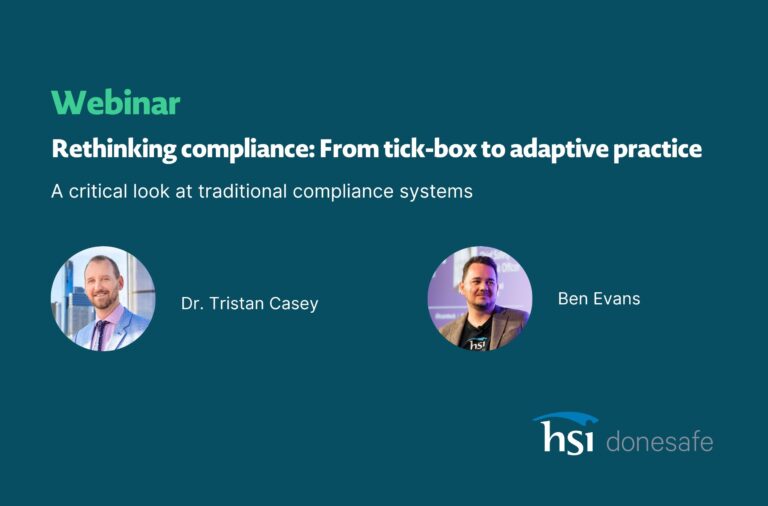
Everyone knows that proper recordkeeping is one of the keys to a successful EHS strategy. But with countless regulations to track and different forms to fill out, how do you make sure you’re staying on top of the requirements? Today, we discuss one of the most well-known incident reporting documents: the OSHA Forms 300, 300A, and 301.
These three forms help the employer, workers, and the regulatory agency evaluate the overall safety of a company’s working environment, each year and over time. They can shed light on unknown risk factors and show which hazards that pose the largest threat. Consistent data aggregation helps provide insights into best practices and solutions for protecting worker safety. The forms are considered confidential material and cannot be released to the public.
What do the OSHA forms track?
First of all, let’s break down the differences between the three forms.
- OSHA Form 300 (The Log): A comprehensive record of workplace injuries and illnesses for a single calendar year.
- OSHA Form 300A (The Summary): A year-end summary report compiling all of the reported injuries and illnesses. Following the previous calendar year, this report should be posted in a visible location in the workplace
- OSHA Form 301 (Injury and Illness Incident Report): This is the first form that should be completed following a reportable work-related injury or illness. It provides details of each individual incident and should correspond to each case reported on Form 300.
Who needs to file?
Maintaining timely and accurate recordkeeping on injury and illness is a vital part of EHS initiatives. Still, certain industries and employers are exempt from these OSHA recordkeeping rules. The exemptions are based on company size and industry. Employers with 10 or fewer employees, as well as certain low-risk industries, are not required to file. The full list of exempt low-risk categories can be found on OSHA’s website.
To add further detail, there is also an exception to the exception. Every employer, even if they are exempt from other recordkeeping, must always report any fatalities or hospitalizations lasting 3 days or longer. These serious incidents must be reported on a quicker timeline:
- Fatalities should be reported within 8 hours after the incident occurs
- Severe injuries (such as amputation or extended hospitalization) need to be reported within 24 hours after the incident occurs
What is a reportable incident?
Since most incidents tend to be in the mild-to-moderate category, it can be hard to know what is and isn’t reportable. Under the OSHA Form 300 guidelines, it is not mandatory to report injuries that are fully treatable with basic first aid (such as bandaging a minor cut).
See How does OSHA define first aid? for the full details.
However, if the injury requires attention beyond first aid, such as emergency response or hospitalization, the incident should absolutely be recorded on Forms 300 and 301. For more information, see How does OSHA define a recordable injury or illness?
When and How to file
Once you have determined that an incident is reportable, it is time to record it on OSHA Forms 301 and 300, in that order. These forms are the first resort for recordkeeping related to workplace injury and illness. Filling out these forms should not be viewed as a simple formality. The more clear, detailed, and comprehensive the record, the more useful it will be for evaluating and improving the company’s EHS standards.
Form 301 is fairly straightforward, so we will focus on properly filling out Form 300, also known as “The Log.” In Step 1 of the Log, there is a line for each employee’s name. While it is important to fill out the form completely and accurately, there are situations where it is prudent to omit to identify information. Injuries and incidents that involve workers’ sensitive personal health information should always be treated with care and confidentiality.
OSHA indicates that the following injuries should always be considered privacy cases:
- Injuries to an intimate or reproductive organ
- Injuries resulting from a sexual assault
- Mental illness
- Cases of HIV infection, hepatitis, or tuberculosis
- A needlestick injury or cut contaminated with blood or other infectious material
- Any other condition or illness where the employee specifically requests it to be handled as a privacy case
What is the proper procedure for filling out The Log while respecting employee privacy? In these cases, the employee name should be replaced with the words “privacy case.” Detailed information about the incident and employee identity can only be stored in a confidential employer file, and it should never be made publicly available.
When filling out The Log, try to go beyond the basic facts of the incident to include crucial details. For example, in Step 2, rather than writing “broken arm”, explain which part of the arm was broken, how it happened, and what steps were taken to remedy the problem.
Step 3 – “Classify the Case”, can elicit confusion because the person completing the form may not know which option to choose. In fact, only one option should be selected, even if multiple options apply to the case. The correct way to fill out the form is to select only the option that describes the most severe outcome the employee experienced. The downloadable Form 300 from the OSHA website is already pre-configured to allow only one option when filling out the form electronically.
Another common question pertains to Step 4, which asks for the total days of lost time due to injury or illness. Often, the question is: Should I count the day the injury was sustained? In this case, the answer is no. The day the injury or incident occurred does not count towards lost time. How does this play out in practice? If a worker is injured at the beginning of their shift, treats the injury at a clinic, returns home by the end of the day, and returns to work the next day, this would not count as lost time.
Keep in mind that there is a cap on recording the number of days of lost time. OSHA places the cap at 180 days, so if a worker has lost more than 180 days of work, it is not necessary to count beyond that.
Electronic submission and compliance
In order to meet OSHA compliance regulations, records from Forms 300, 300A, and 301 must be kept at the workplace for a minimum of five years. In addition, employers must post the Summary (Form 300A) of all recorded injuries and illnesses for the previous year. This document should be posted in a visible, accessible location, between the dates of February 1st and April 30th. The Log (Form 300) and Summary (300A) must be maintained for five years following the calendar year to which the records pertain.
OSHA Forms 300, 300A, and 301 can be filed online, via OSHA’s Injury Tracking Application (ITA) tool. The completed form is due by March 2nd of the year following the year covered by the form.
In 2019, OSHA issued a Final Rule about electronic submission, which became effective February 25th, 2019. The rule applies to employers with 250 or more employees, and it amended previous electronic reporting requirements for these companies. Under the new rule, these employers are no longer required to electronically submit Forms 300 and 301, out of a concern for worker privacy. The employers are still required to submit Form 300A (The Summary), and still required to post this form in the workplace and maintain records for a minimum of five years.
Can safety management software help ensure OSHA 300 compliance?
As we can see, each of the three forms serves a different purpose, and the rules for compliance and submission are subject to change and amendments. This is where safety management software really shines. When it comes to regulatory compliance, good EHS software can simplify recordkeeping while helping avoiding mistakes.
For one, safety management software keeps all regulatory documents together, helping to review and ensure compliance for a variety of different regulations. EHS software also has built-in features that track potential changes to compliance rules.
For example, twice a year, the Department of Labor publishes a list of rules being considered or worked on. For busy EHS managers, this can be a lot of information to keep up with, and it is easy to miss important updates. Safety management software can flag, track, and follow up on these rules, so you don’t have to.
Safety management software, like Donesafe, can also help ensure compliance by assisting with employee safety training. It can administer up-to-date and consistent training through online video courses. It also stores training results and records to ensure employee accountability and follow-through.
When injuries and illnesses are reported consistently and correctly, companies can be more successful at identifying and addressing potential risks. This increases employee safety and prevents financial losses relating to workers’ compensation claims. When it comes to regulatory compliance, knowledge, and resources are indispensable. Filling out the forms correctly and comprehensively leads to more useful information. Enlisting the help of safety management software helps streamline reporting requirements and stay on top of rule changes to ensure continued compliance.
Share:



